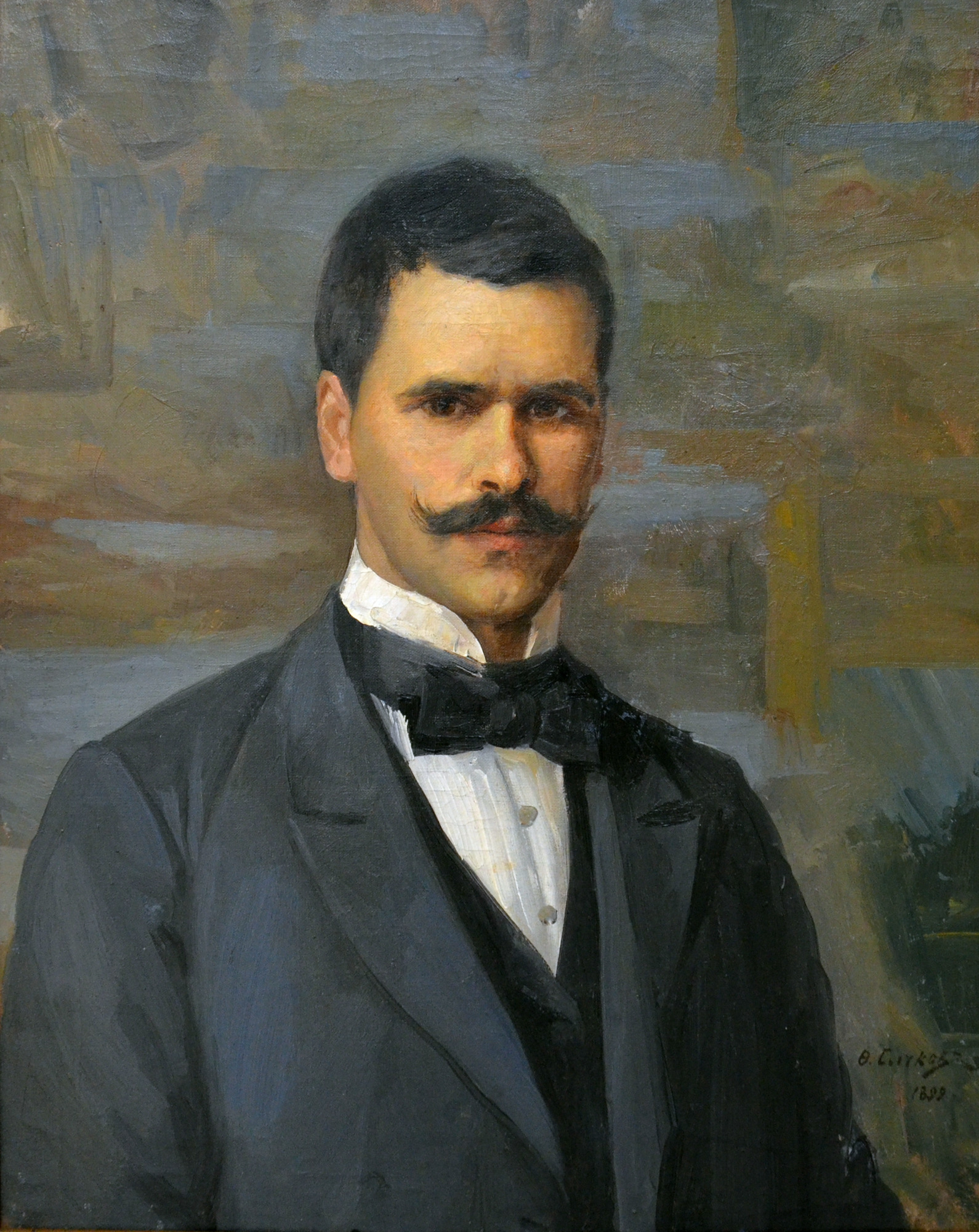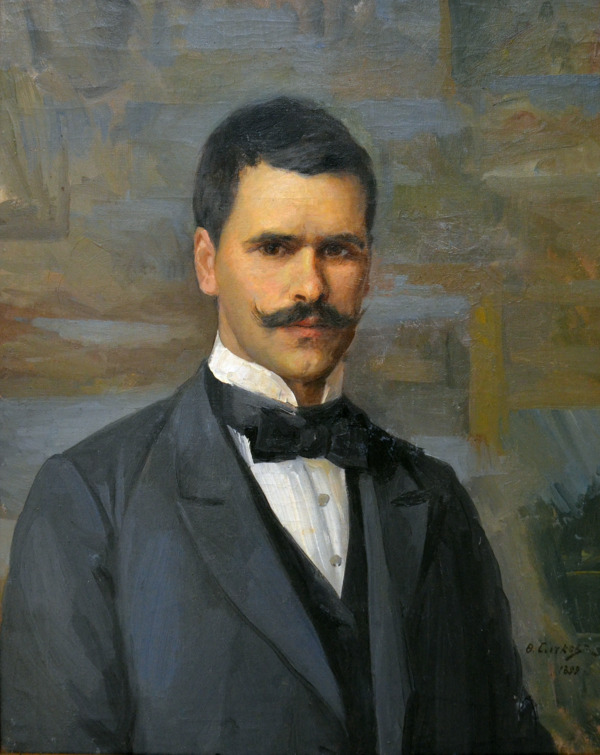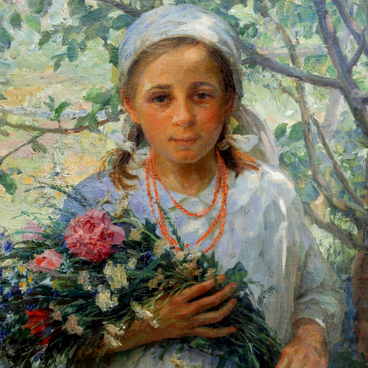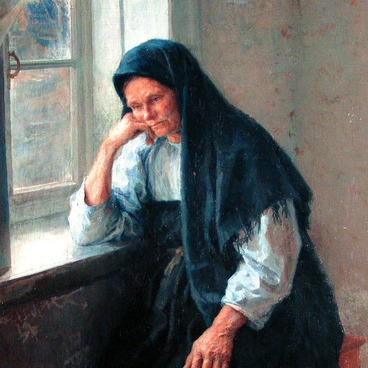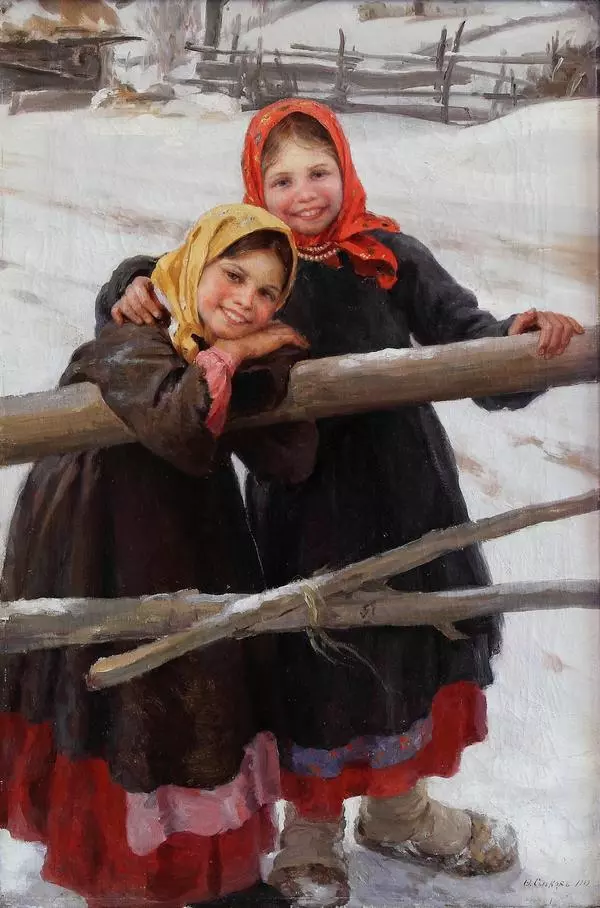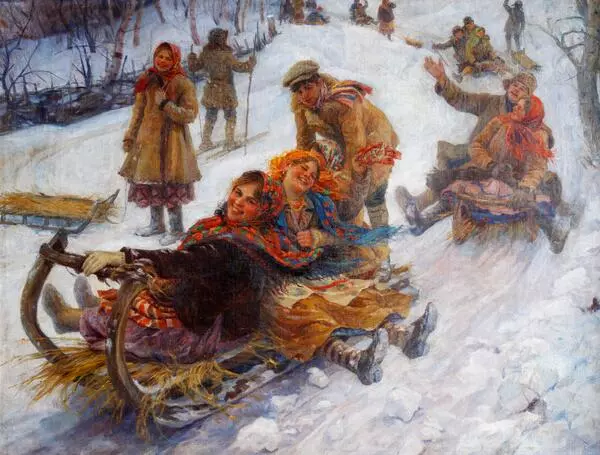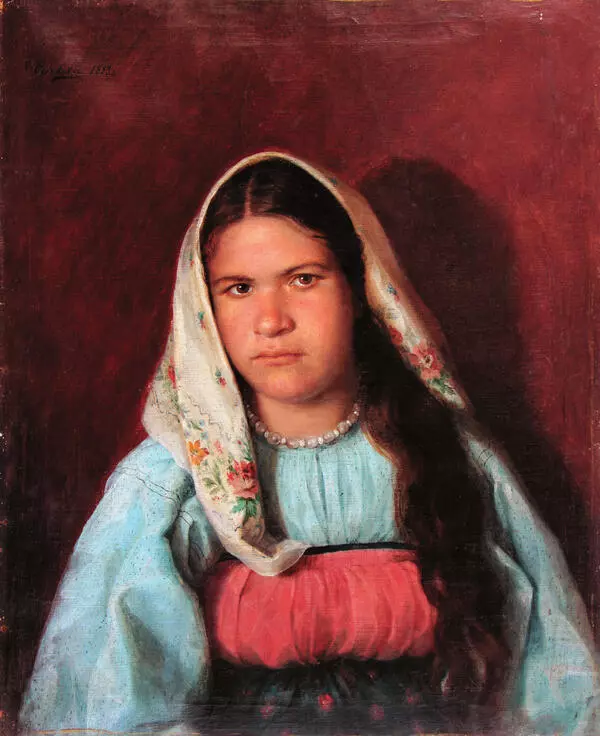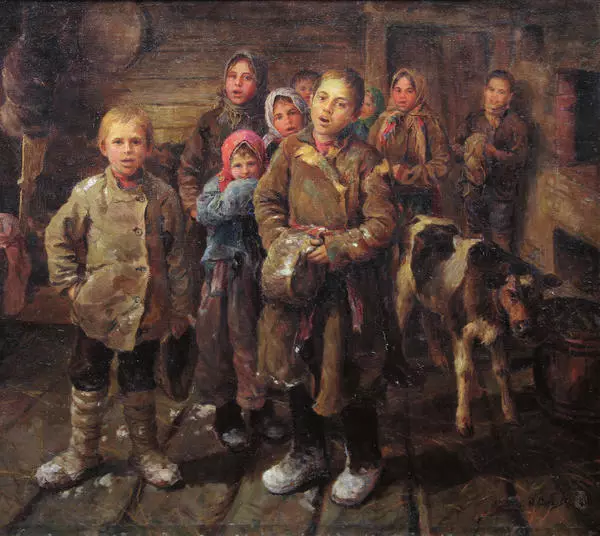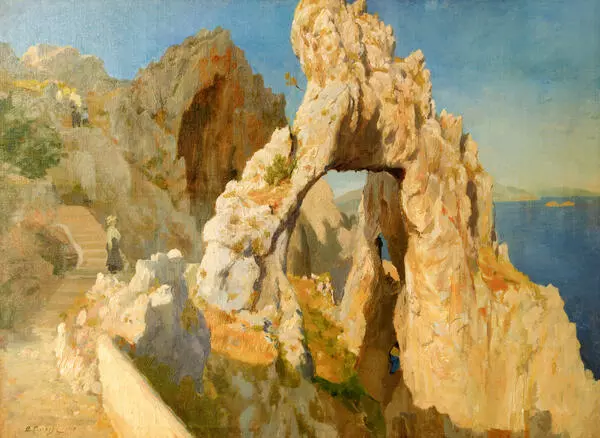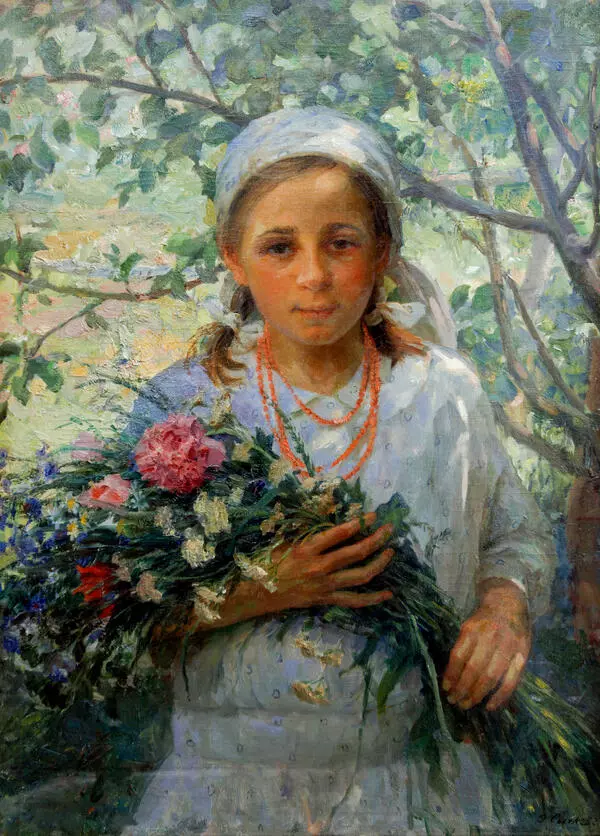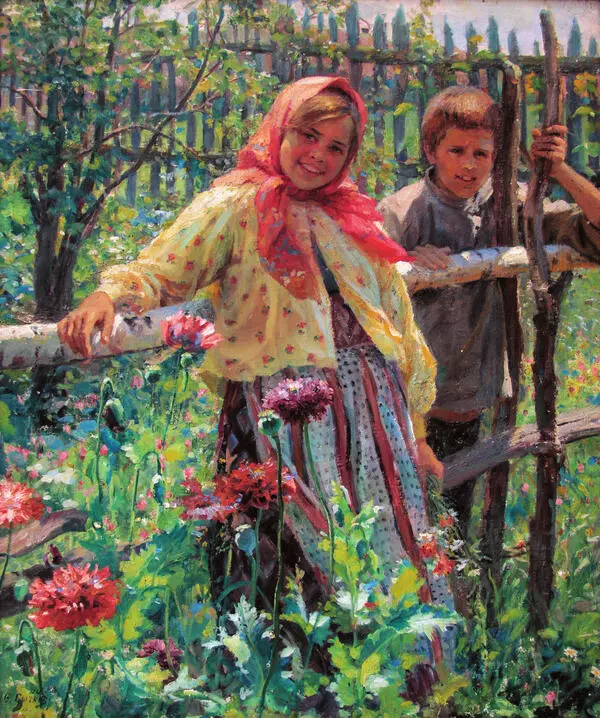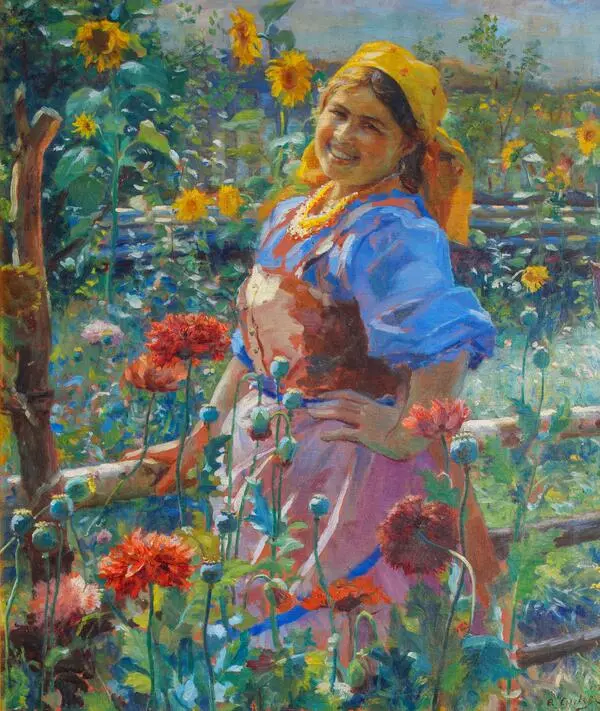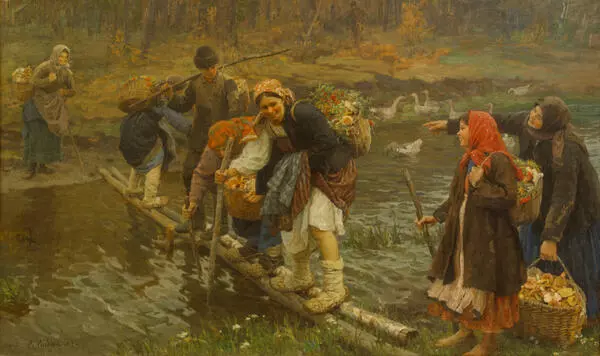During his life, Fedot Sychkov painted two oil and two watercolor self-portraits. This self-portrait is a later one — it was painted a year before the artist graduated from the Academy of Arts in 1899. In comparison with the early self-portrait of 1893, this image is more dignified. The anxiety in the eyes of a former peasant from a remote province, which was in the early portrait, was replaced by the sense of self-confidence. It is clear that six years later, the young man already had a clear vision of his way in art.
In ‘Self-Portrait’ of 1899, Sychkov appears as a dignified young man with a strong character. He looks intently and seriously at the spectator with black, deep-set eyes. A lush mustache that is curled upwards emphasizes his social status.
The artist owes his posture mainly to his friend Stanislav Matskevich. The young men became friends at the Drawing School and went to the Academy of Arts together. This acquaintance had a beneficial effect on the shy Fedot Sychkov. It was Stanislav Matskevich who taught his friend the proper ways of behaving and dressing that were common in the urban environment. Hence, the three-piece suit, the bow tie, and the carefully styled hair revealing a high forehead in the self-portrait.
Amateur artists learned the basics of painting together in classes at the Academy and en plein air in the suburbs of St. Petersburg. They attended exhibitions, stayed late in the library of the Academy, spent a lot of time marveling at the masterpieces housed in the halls of the Hermitage, and shared the stories of their success. The last years at the Academy and the first decade after the graduation was the time when Fedot Sychkov found his own style.
The famous Russian writer and journalist Vladimir Gilyarovsky influenced the choice of the subject matter, which remained almost the same throughout the artist’s life. Fedot Sychkov accidentally met Gilyarovsky while walking with his patron General Ivan Arapov in the alley of the landowner’s park. At that time, the young man came to spend the summer in his home village Kochelayevo, and ‘uncle Gilyay’ invited him to his famous evenings, where all the best artists gathered. It was Gilyarovsky who advised the young master to focus not on the portraits of the nobility, but on the everyday life of ordinary people.
In ‘Self-Portrait’ of 1899, Sychkov appears as a dignified young man with a strong character. He looks intently and seriously at the spectator with black, deep-set eyes. A lush mustache that is curled upwards emphasizes his social status.
The artist owes his posture mainly to his friend Stanislav Matskevich. The young men became friends at the Drawing School and went to the Academy of Arts together. This acquaintance had a beneficial effect on the shy Fedot Sychkov. It was Stanislav Matskevich who taught his friend the proper ways of behaving and dressing that were common in the urban environment. Hence, the three-piece suit, the bow tie, and the carefully styled hair revealing a high forehead in the self-portrait.
Amateur artists learned the basics of painting together in classes at the Academy and en plein air in the suburbs of St. Petersburg. They attended exhibitions, stayed late in the library of the Academy, spent a lot of time marveling at the masterpieces housed in the halls of the Hermitage, and shared the stories of their success. The last years at the Academy and the first decade after the graduation was the time when Fedot Sychkov found his own style.
The famous Russian writer and journalist Vladimir Gilyarovsky influenced the choice of the subject matter, which remained almost the same throughout the artist’s life. Fedot Sychkov accidentally met Gilyarovsky while walking with his patron General Ivan Arapov in the alley of the landowner’s park. At that time, the young man came to spend the summer in his home village Kochelayevo, and ‘uncle Gilyay’ invited him to his famous evenings, where all the best artists gathered. It was Gilyarovsky who advised the young master to focus not on the portraits of the nobility, but on the everyday life of ordinary people.
